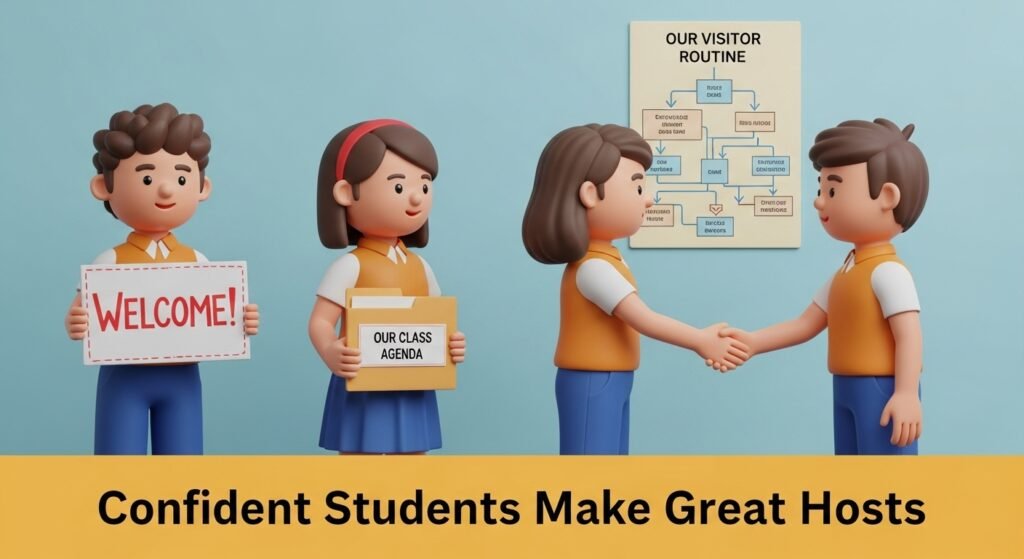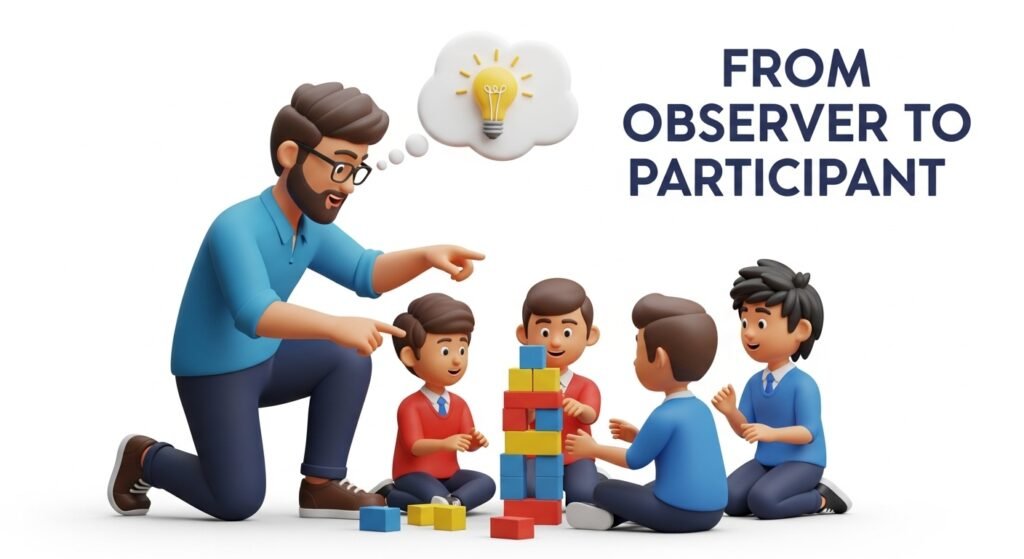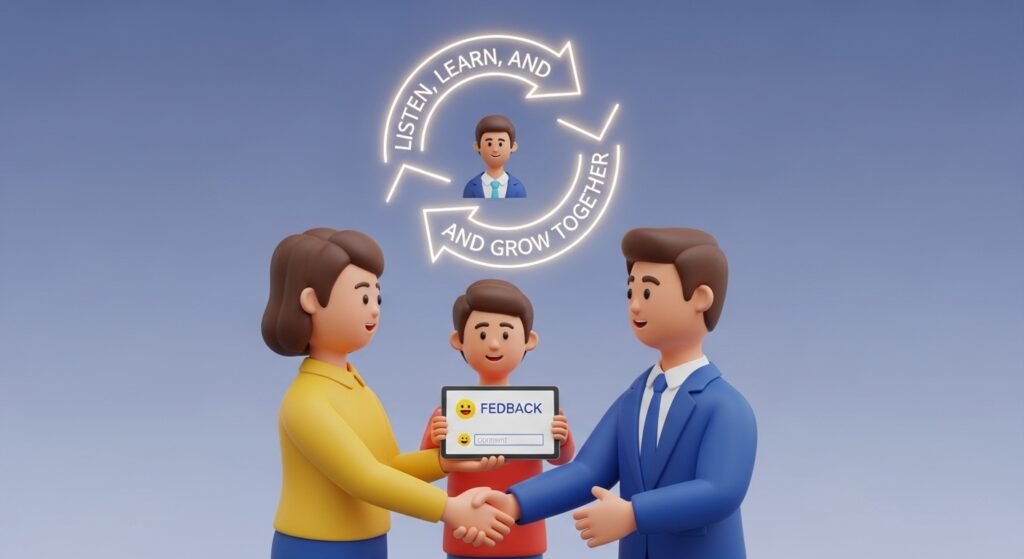Learn 5 actionable tips for welcoming classroom visitors effectively. Create an inclusive, engaging environment that benefits students, guests, and educators alike.
5 Tips for Welcoming Classroom Visitors Creating an Inclusive & Engaging Experience
The gentle knock on the door. All eyes—yours and your students’—snap toward the sound. A visitor. Whether it’s a parent, a local community member, or an educational specialist, that moment of arrival can shape the entire tone of their experience. Too often, welcoming classroom visitors is reduced to a hurried greeting and an extra chair squeezed into the corner. But what if we saw these visits not as interruptions, but as opportunities? Opportunities to build bridges, to showcase learning, and to strengthen your classroom community?
The art of welcoming classroom visitors effectively is a skill that blends hospitality, pedagogy, and emotional intelligence. It’s about more than just politeness; it’s about creating an environment where guests feel valued, students feel proud, and learning continues seamlessly. A well-executed visit can foster deeper parent engagement, provide students with authentic audiences for their work, and even open doors to community partnerships.
Research underscores the importance of this practice. A study by the National Association for the Education of Young Children (NAEYC) emphasizes that family engagement—including visits—significantly supports student development and academic success. Similarly, a report from Edutopia highlights how creating an open, inviting classroom culture boosts student confidence and inclusivity.
So how do you transform a potentially awkward interruption into a meaningful experience? Here are five actionable tips for welcoming classroom visitors with intention and grace.

1. Prepare Students in Advance
Why It Matters:
When students know what to expect, they feel more confident and less distracted. Preparing them turns a visit into a shared responsibility rather than a surprise.
How to Do It:
- Discuss the Purpose: Explain who is visiting and why. For example, “Ms. Chen is a marine biologist who will help us learn about ocean ecosystems.”
- Assign Roles: Designate greeters, tour guides, or presenters. This empowers students and distributes the “hosting” workload.
- Practice Interactions: Role-play how to introduce themselves, explain what they’re learning, or answer questions.
Pro Tip:
Create a routine for visits so students know the drill—whether it’s a special welcome song for younger grades or a quick student-led overview of the day’s objectives for older ones.

2. Create a Welcoming Physical Environment
Why It Matters:
First impressions count. A thoughtfully prepared space signals respect and sets a positive tone.
How to Do It:
- Visitor’s Corner: Designate a small area with a chair, notepad, and welcome packet (e.g., agenda, student work examples).
- Student Work Displays: Showcase projects, artwork, or charts that highlight current learning.
- Clear Signage: Use signs or digital slides to guide visitors and summarize lesson goals.
Pro Tip:
Involve students in designing the space. Their creativity will make the room feel more authentic and inviting.
How AI is Creating a More Human Future for Education

3. Integrate Visitors into the Learning Process
Why It Matters:
Visitors shouldn’t be passive observers. When they participate, their presence enriches the learning experience.
How to Do It:
- Plan Inclusive Activities: Design tasks that invite visitor input, like interviews, panel discussions, or hands-on labs.
- Provide Context: Share lesson plans or discussion questions in advance so visitors can contribute meaningfully.
- Debrief Together: After the visit, reflect with students and the guest on what was learned.
Pro Tip:
Leverage visitors’ expertise. A grandparent who gardens could help with a plant biology lesson, or a local artist might assist with a creative project.
How AI is Creating a More Human Future for Education
4. Communicate Clearly and Early
Why It Matters:
Clear communication prevents misunderstandings and ensures everyone is on the same page.
How to Do It:
- Send Invitations: Use emails or newsletters to outline the visit’s purpose, timing, and expectations.
- Share Guidelines: Let visitors know about classroom norms (e.g., device policies, participation expectations).
- Follow Up: After the visit, thank guests and share outcomes—like student reflections or photos.
Pro Tip:
Create a reusable digital template for invitations and reminders to save time.
10 Digital Skills for Future-Proof Your Career in 2025

5. Foster a Culture of Reflection and Feedback
Why It Matters:
Continuous improvement ensures that each visit is better than the last.
How to Do It:
- Student Reflection: Ask students to share what they enjoyed or learned from the visit.
- Visitor Feedback: Provide a simple form for guests to offer suggestions.
- Teacher Journaling: Note what worked well and what to adjust next time.
Pro Tip:
Share feedback with students to validate their role in welcoming classroom visitors successfully.
Top 20 Best Educational Websites for Students in 2025
Bringing It All Together
| Tip | Key Benefit | Example |
|---|---|---|
| Prepare Students | Reduces anxiety, empowers hosts | Student greeters welcome a guest speaker |
| Create a Welcoming Space | Sets a positive tone | Visitor corner with agenda and work samples |
| Integrate Visitors | Enhances learning | Guest participates in a science experiment |
| Communicate Clearly | Prevents misunderstandings | Pre-visit email with guidelines |
| Reflect and Improve | Encourages growth | Post-visit feedback form |
Conclusion: Turn Visitors into Partners
Welcoming classroom visitors effectively is more than a checklist—it’s a mindset. By seeing each guest as a potential partner in learning, you transform interruptions into investments. You build a classroom culture that is open, inclusive, and dynamic. And in doing so, you teach students one of life’s most vital skills: how to welcome others with confidence, kindness, and purpose.
So the next time that knock comes, you’ll be ready—not just to open the door, but to open worlds of possibility.
Call to Action (CTA)
What’s your best tip for welcoming classroom visitors? Share your story in the comments below! For more strategies on building a positive classroom culture, explore our Classroom Management Guide Visit 50 Free Study Resources Every Student Should Save in 2025




Pingback: AI Science of Matter: Atoms and Elements - PaidScripts -Tech Education Hub: Courses & Student Resources